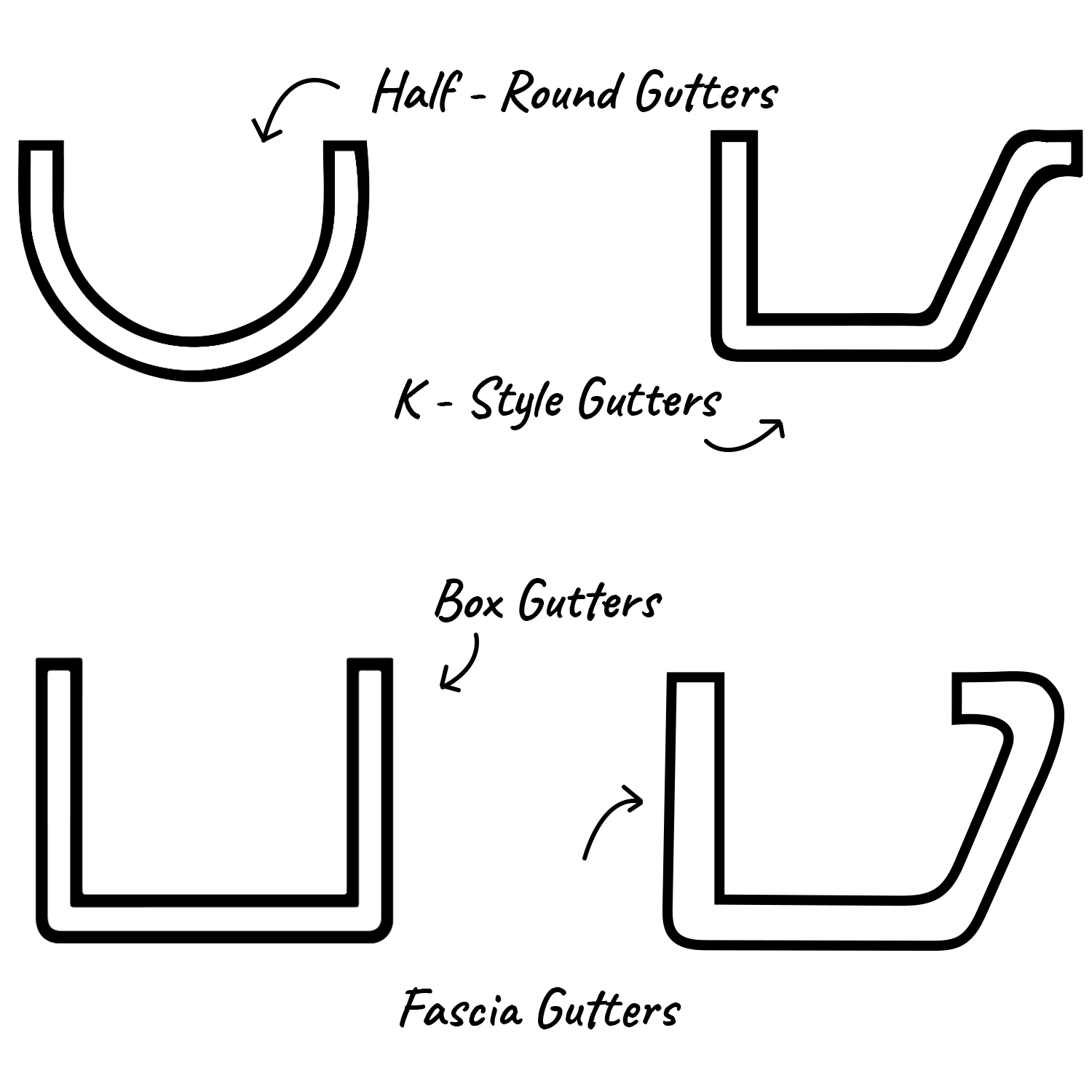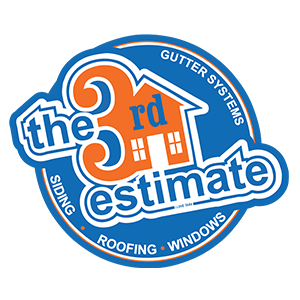Are There Different Types of Gutters?
When it comes to saving your home from water damage, gutters play an important role. They channel water away from your roof and foundation, helping to prevent repairs. But did you know that there are different types of gutters to choose from? Each type has its benefits and drawbacks, and selecting the right one for your home depends on factors such as climate, budget, and aesthetic preference. In this blog, we’ll explore how to choose the right gutters for your home.

K-Style Gutters
K-style gutters are one of the most popular choices for homes. Named for their profile, which resembles the letter “K” when viewed from the side, these gutters have a flat back and bottom with a decorative front that mimics crown molding.
Advantages:
- Aesthetic Appeal: The design of K-style gutters adds a decorative touch to your home’s exterior, making them a popular choice for homeowners looking for both functionality and style.
- Capacity: K-style gutters have a higher water capacity than some other types, making them good for areas with heavy rain.
- Durability: Their shape provides added strength, making them less likely to bend or warp under pressure.
Disadvantages:
- Installation Complexity: Due to their shape, K-style gutters can be more challenging to install.
- Potential for Clogging: The angles and edges of K-style gutters can make them more prone to clogging if not properly maintained.
Half-Round Gutters
Half-round gutters are shaped like a half-circle. These gutters have a more traditional appearance and are often used in older homes or historic buildings.
Advantages:
- Classic Look: Half-round gutters offer a timeless appearance that complements older or historic homes.
- Smooth Interior: The smooth, rounded surface allows water to flow more freely, lessening corrosion and debris buildup.
Disadvantages:
- Lower Capacity: Compared to K-style gutters, half-round gutters have a lower water capacity, making them less suitable for areas with heavy rain.
- Installation Cost: Half-round gutters are often more expensive to install due to their unique shape and the need for special brackets.
Box Gutters
Box gutters are typically found on commercial buildings or older homes. They are installed within the roof structure, rather than along the roof’s edge, making them less visible from the ground.
Advantages:
- Concealed Design: Box gutters are hidden from view, providing a clean, uninterrupted roofline.
- High Capacity: These gutters can handle large volumes of water, making them ideal for areas with frequent or heavy rain.
Disadvantages:
- Maintenance Challenges: Since box gutters are integrated into the roof structure, they can be more difficult to access and maintain.
- Potential for Leaks: Improper installation or aging can lead to leaks that may be challenging to repair due to their concealed nature.
Fascia Gutters
Fascia gutters are custom-built and are often installed directly onto the fascia boards of a home. These gutters offer a sleek, modern appearance and can be designed to match specific needs.
Advantages:
- Custom Fit: Fascia gutters are tailor-made for your home.
- Streamlined Look: These gutters provide a clean, modern appearance that is seamless with your roofline.
Disadvantages:
- Cost: The custom nature of fascia gutters makes them more expensive than standard gutter types.
- Complex Installation: Installation typically requires a professional, which can add to the overall cost.
Conclusion: Choosing the Right Gutter for Your Home
Selecting the right type of gutter for your home depends on various factors, including your budget, climate, and aesthetic preferences. Each type offers unique benefits. It’s essential to consider your specific needs and consult with a professional if you’re not sure which option is best for your home. Properly installed and maintained gutters are key to protecting your home from water damage. When you have to choose the right gutters for your home, it can be a difficult decision. But, weighing the pros and cons can make it just a bit easier.







